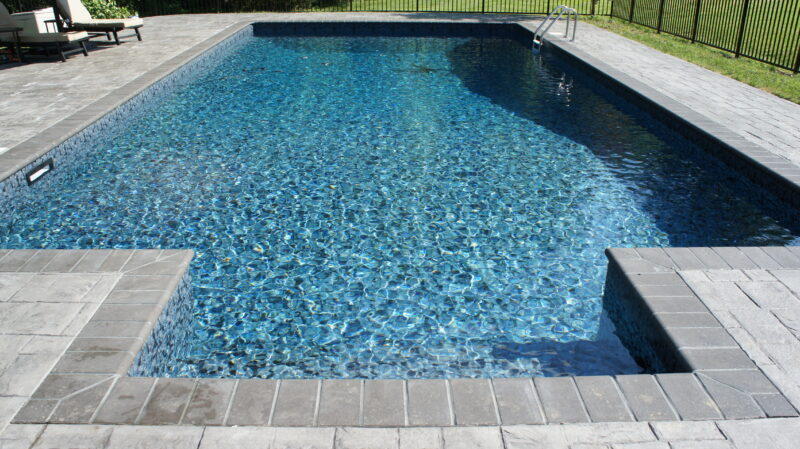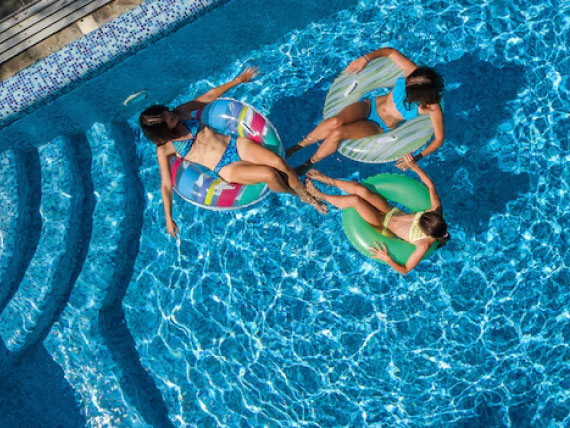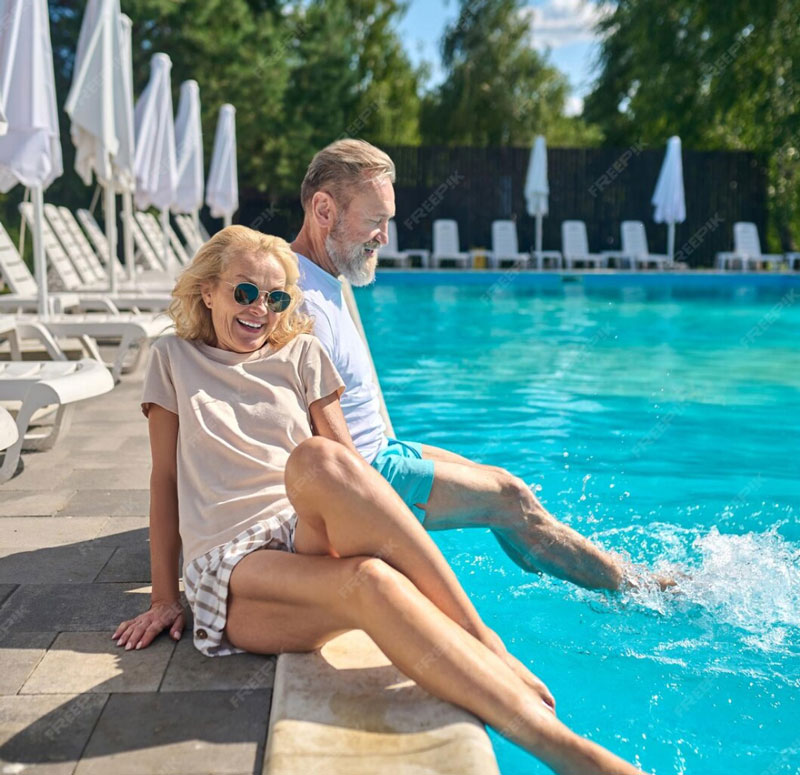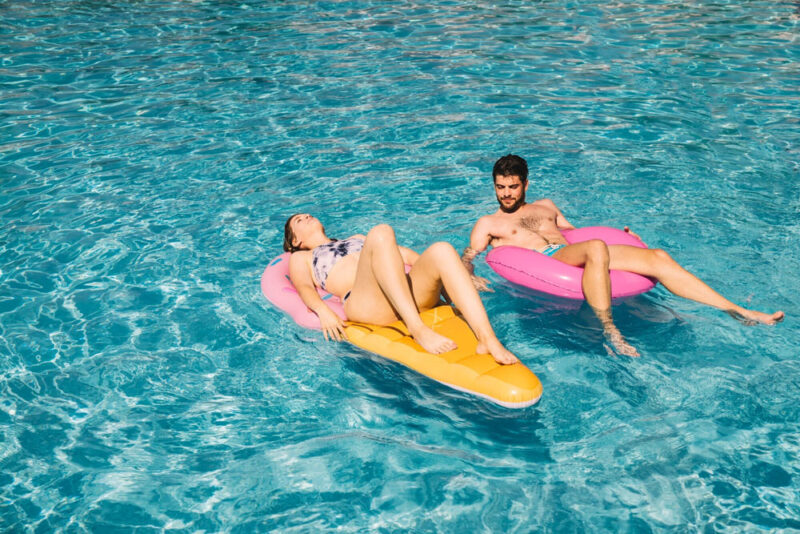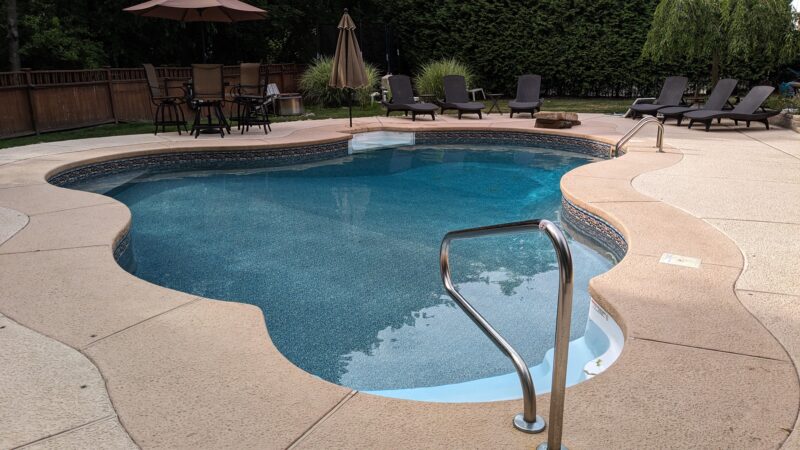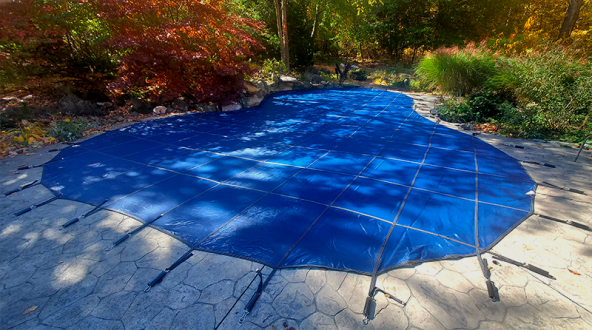Top 10 Different Types of Pool Liners (Above-Ground Pools)
Pool distributors and pool owners: if you’re looking to install a new backyard swimming pool, you’ll want to know what types of pool liners exist. After all, choosing the right pool liner can make all the difference between a more polished and less leaky pool.
But where to start? Kayden Manufacturing here: for more than 20 years, we’ve been building nice liners and safety covers that stand the test of time and fit like a glove.
If you’re wondering what different types of pool liners exist, you’ve come to the right place. Join us as we explore pool liners in this roundup review of some of the most common pool liners on the market.
The 10 most common types of pool liners
|
Common pool liners for above-ground swimming pools
When it comes to above-ground pools, these top-quality pool liners are some of the best the industry offers:
- Beaded/ hung vinyl pool liners
- Overlap vinyl liners
- Expandable liners
- J-hook vinyl liners
- Unibead vinyl liners
- Tile liners
- Waterproofing plaster liners
- Duobead liners
- EZ-Bead liners
- PVC liners
We’ll review each liner in greater depth in the remainder of this article.
1. Beaded or hung vinyl liners
Beaded liners — also called hung vinyl liners — look and feel like tile. They have a groove that snaps into a track and allows you to install the liner into the pool foundation.
They tend to be easier to install than other liner options, but they can cost more than liners that are similar in lifespan and material.
They’re available in many designs and are easy to change, but can create gaps and lead to corrosion. Cutting them to fit the size of the pool is challenging.
Nevertheless, when you choose top-quality vinyl, proper chemicals, and strong safety covers, there’s no reason to believe you won’t get a ton of life out of your vinyl pool liner.
2. Overlap pool liners
Overlap pool liners are some of the most popular and common on the market. As their name suggests, they overlap over the edges of a pool.
Once fitted over the walls, overlap swimming pool liners are secured to the wall with coping strings before the excess material is removed. While less expensive and definitely possible to fit without the help of a professional pool liner installer, removing the excess can be a challenge.
3. Expandable liners
Another form of overlap pool liners, these liners are designed for deep pools. Expandable liners are often used on pools that are 72 inches or deeper.
These liners are very budget-friendly but may include wrinkles after installation is complete.
4. J-hook vinyl liners
This above-ground pool liner is a hit for its simplicity. The installation of a J-hook vinyl liner is similar to that of a beaded liner, but you won’t need a bead receiver or track to attach the liner to the pool foundation.
These liners are easy to install, but they have a fixed wall height, so they can’t be adjusted. These are great liners for the homeowner on a budget.
5. Unibead vinyl liners
If you’re looking to update the look of your pool’s aesthetic — and you already have a track or bead receiver installed on your pool — another type of liner that’s popular is unibead vinyl liners.
Another advantage of a unibead vinyl liner is that it can be used regardless of the type of liner you have. The downside is that it tends to be more expensive and needs to be installed with the sun out to reap maximum benefits on the liner.
6. Tile liners
If you’re considering lining a concrete pool, tile liners will offer you more protection than a vinyl pool liner. What’s more, you won’t have to replace tile liners as frequently.
Best of all, tile liners come in a variety of different patterns, shapes, sizes, and materials.
With that being said, if installing a tile liner for your swimming pool, expect to shell out about $2,000 to $5,000 for a tile liner. As such, tile liners tend to be more expensive and take longer to install than traditional vinyl liners.
7. Waterproofing plaster liners
Speaking of concrete pools, to help you make the best decision possible, we also wanted to offer you other alternatives for the liner you choose for your concrete pool. If installing a pool liner in a concrete pool, consider waterproofing plaster.
Waterproofing plaster is a smart choice for the pool owner who likes the look of their pool but wants to give their pool another layer of protection and a defensive barrier on pool floors and walls.
Waterproofing plaster tends to cost between $500 and $1,000 and is less expensive than vinyl and tile liners. The trade-off is that you may not have the option to customize the look of your pool to as large an extent, as not many color options exist for waterproofing plaster.
Also, waterproofing plaster can cost a great deal when the time comes for repair work.
8. Duobead liners
These foldable and unfoldable liners work like other standard beaded pool liners. Duobead liners attach to a bead receiver.
When this new pool liner is installed in an outdoor space, the liner functions like a unibead and J-hook liner. That is, it hangs on the wall without the need for other materials, pool supplies, and hardware.
Duobead liners track around the top of the pool wall, making them a versatile pool liner for those looking to install their pool liners themselves.
With that being said, they tend to be more expensive and tend to install with greater ease on a sunny day.
9. EZ-Bead liners
Of the options available for a ground pool, easy bead liners are another versatile option. These pool liners have two types of beads in one liner.
They can be installed on a bead receiver or as a J-hook. No modifications are necessary, which makes this liner the right liner for those looking for an easy installation process.
Easy bead liners are a popular choice. They tend to cost more than other liners and need to be installed on a sunny day to ensure the liner fits best.
10. PVC liners
These liners tend to work best for smaller pools. PVC ground pool liners help slow the growth of bacteria and algae.
With PVC liner membranes, you won’t have to worry about acid washes or using excessive chemicals to keep your pool clean.
Nevertheless, PVC liners tend to have a shorter lifespan, are susceptible to punctures from sharp objects, and may wrinkle over time.
Did you know?
When the time comes to find the right type of pool liner for your pool maintenance needs, look for the following indicators:
- Deterioration
- Stretching
- Fading and stains
To learn more about what you should look for before deciding if you need a pool liner replacement, check out our article about replacing pool liners.
Kayden Manufacturing: sourcing the right type of liner for your needs
Before you change the liner on your above or in-ground pool, to minimize wear and tear on your outdoor area, we always recommend finding a pool pro with decades of experience to install your new liner.
While do-it-yourself options are available for the likes of, say, EZ-Bead liners and Duobead liners, different types of swimming pools require different types of care.
That’s where a pool professional can come in. They can help make the installation process seamless, clarifying maintenance requirements needed for your new pool liner.
Pool owners: the good news is that when you partner with us, you’ll have access to a nationwide network of pool distributors, dealers, and installers. Pool dealers: we carry some of the nation’s most versatile selection of liners, allowing you to choose a liner that fits the size and shape of your pools.
For more information about pool designs, factors to consider when installing a vinyl liner, or anything else you might want to know about the durability or functionality of our vinyl liners, get in contact with us. We’d love to get to know you and see how we can help.
Frequently asked questions about types of pool liners
What should I consider before choosing a pool liner?
To help you choose a pool liner with as little fuss as possible, we find that the following factors are worthwhile to consider:
- How thick you want your pool liner to be
- Whether you’re looking for a specific color or design for your pool.
- Your pool budget
- Personal preferences about whether you want to install the liner yourself or have a pool professional install the liner.
Keeping these factors in mind will ensure a more seamless, relaxed experience when it comes time for pool liner installation.
Do pool liners need regular maintenance?
Yes, indeed they do! Without proper maintenance, you may pay anywhere between $1,000 and $3,600, on average, for a new pool liner. For tile liners, expect to pay anywhere from $2,000 to $5,000 for a new pool liner plus installation.
Do all pools need a pool liner?
Not necessarily. You don’t need a pool liner for fiberglass, gunite, or tiled-wall pools. With that being said, pool liners can help with vinyl-lined, concrete, and other types of above ground pools as they help protect against leaks, make cleaning easier, and save on maintenance.
As technological improvements in pool liners continue to increase — improvements such as UV-resistant materials and antimicrobial coatings — swimming pool liners will continue to be a popular choice for pool businesses and owners.
P.S. – So, you actually read through this whole blog. And, we must apologize profusely for how nonsensical it may have seemed at times. But, you’re actually amazing.
You should really click on the link below and talk to us, because we’ll share just what you’re looking for in our time together. Thanks for reading. We just like to keep you on your toes.
More Helpful Content for You
10 Simple Pool Liner Cleaning/Care Tips to Keep Pool Liners Clean
A pool liner can last anywhere from five to 20…
6 Benefits of Being a Kayden Dealer
In the world of pool building and renovation, the products…
A Quick and Comprehensive Guide to How to Clean a Pool Cover
Keeping a pool maintained and serviced is a no-brainer. But,…

